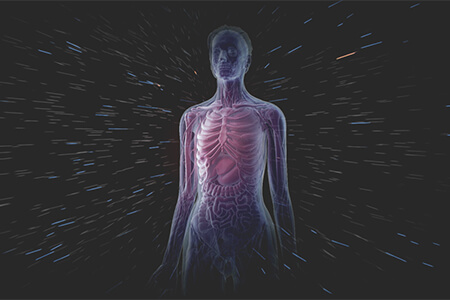5 | Summary
Summary
- The human body requires:
- Input of water, nutrients and oxygen.
- Output of waste.
- Constant temperature and pressure.
- Characteristics of humans (and all living things) include movement, responsiveness, respiration, digestion, absorption, circulation, assimilation, excretion, growth and reproduction.
- A body system is a group of organs that collectively performs an overall function.
- The 11 main body systems are the skeletal system, muscular system, integumentary system, respiratory system, digestive system, circulatory system, excretory system, lymphatic system, reproductive system, nervous system and endocrine system.
- The nervous system and the endocrine system work together to coordinate and regulate the other body systems.
- The nervous system acts quickly and produces short-term effects. It uses electrical signals called nerve impulses, which travel via nerve cells.
- The endocrine system acts slowly and produces long-term effects. It uses chemical signals called hormones, which travel via the bloodstream.
- The lymphatic system forms part of the body’s immune response by protecting the body against pathogens which cause disease.

(Image: NASA)

